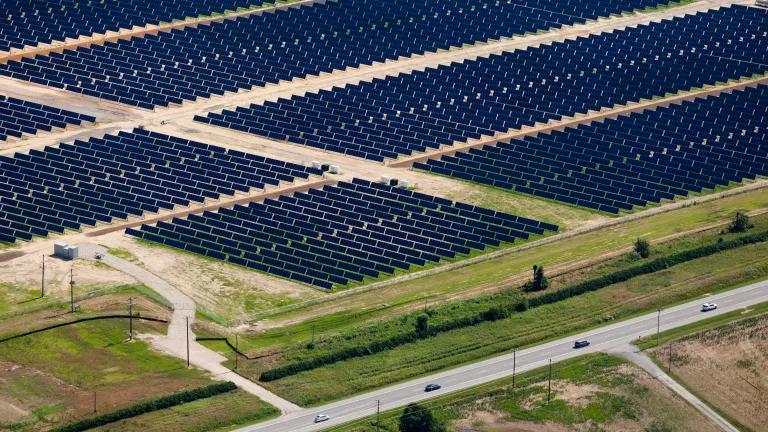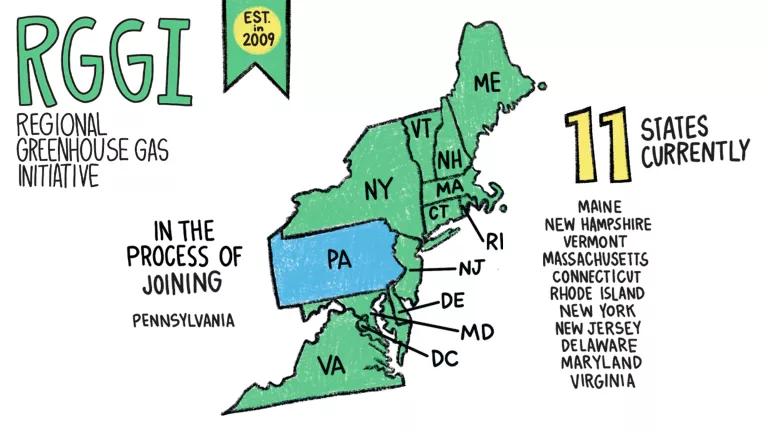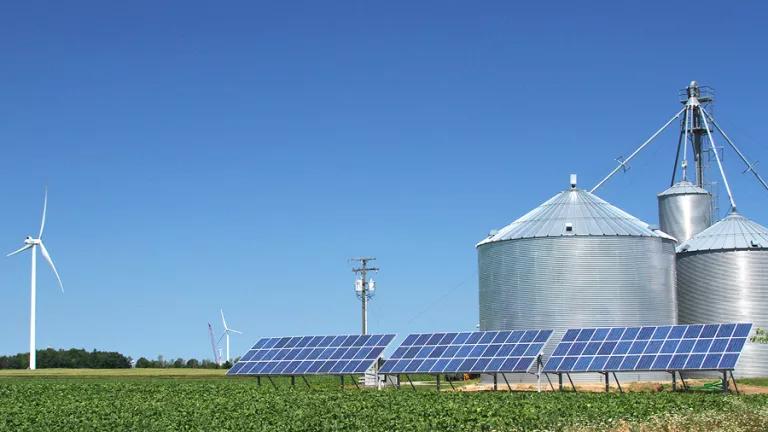
Will Parson/Chesapeake Bay Program with aerial support by LightHawk
The highly anticipated clean energy explosion under the historic Inflation Reduction Act faces a significant threat. Thanks to IRA incentives, cheap renewable energy should be more widely available to Americans than ever. This should be welcome news for corporate and state-mandated renewable energy targets. However, new NRDC analysis has found that even under recent reforms, the country’s largest grid operator is unlikely to approve new renewable projects quickly enough to even meet mandatory minimum state standards.
As of September 2022, there were more than 202 gigawatts (GW) of renewable energy resources waiting for PJM approval, over 95 percent of total queued projects. The PJM interconnection queue is the sluggish process by which new renewable projects seek connection to the bulk power grid. Queue reforms have been approved to clear the years-long backlog, but it is unclear how effective they will be in facilitating the historic clean energy growth anticipated under the IRA. For years, renewable energy developers have been plagued by extensive delays and skyrocketing interconnection costs, recently quantified by Lawrence Berkeley Laboratory. While the reforms are undoubtedly an improvement to the status quo, NRDC analyzed whether the pace of project approvals would be enough for regional states to meet their renewable portfolio standards. Our analysis shows that the plan does not go far enough to fully untangle the gridlock. Without further action, the queue continues to threaten the progress towards widely available, affordable clean energy anticipated under the IRA.
The queue will just barely provide enough renewable energy to meet aggregate RPS demand through 2027; states with the most ambitious RPS targets are likely to lack adequate supply to meet their demand starting before 2027. There is little doubt that RPS targets and broader policy goals will be constrained by the speed and efficiency of the interconnection queue.
Planning for a high-renewables future in PJM must involve deeper changes and include diverse stakeholder engagement, lessons learned from systems with faster interconnection processes, and transparent collaboration between planning authorities and the states. PJM must restore trust in the functioning of the queue by delivering on the reform timeline, accelerating studies where possible, and action on proactive transmission planning to reduce system costs and provide a means for state policies to succeed.


